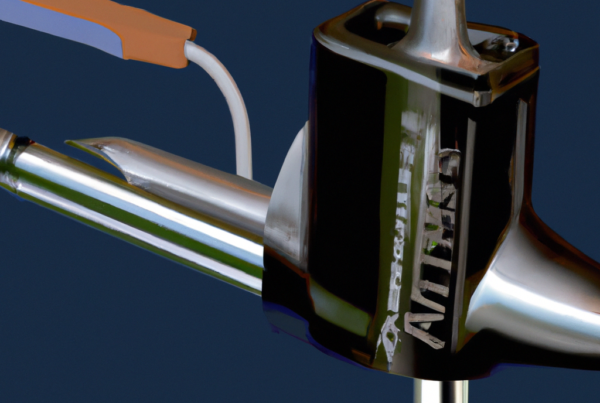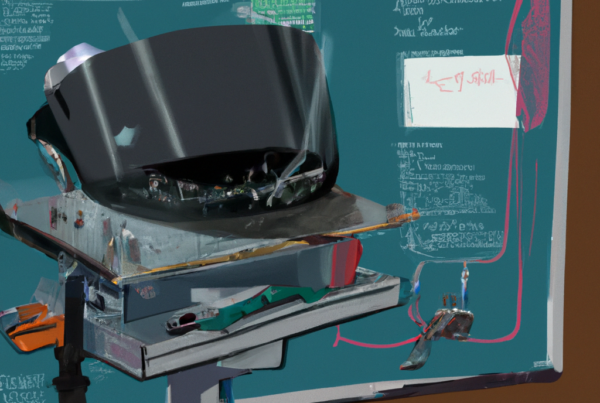Welders are exposed to a variety of hazardous conditions when performing their work, but few of these dangers are more serious than eye and skin damage from the intense light produced by welding arcs. The use of a welding helmet with colored lenses is an essential part of any welder’s safety gear, helping to protect against ultraviolet, infrared, and visible light radiation. Different lens colors provide different levels of protection, so it’s important for welders to understand which type of lens is best for their specific job. With the right lens, welders can ensure their eyes and skin are well-protected from the hazardous light produced during their work.

What are colored lenses in welding helmets?
Colored lenses in welding helmets are designed to protect welders from direct and reflected light that is created during the welding process. They are used to reduce the intensity of the light, making it easier to work with the welding equipment.
Colored lenses in welding helmets help protect against:
- Direct light from the welding arc
- Reflected light from the welding arc
- Ultraviolet (UV) radiation
- Infrared (IR) radiation
- Spatter and sparks
The most common lens colors used for welding helmets are green, amber, and blue. The green lenses are designed to reduce the intensity of the light from the welding arc, while the amber and blue lenses are designed to reduce the intensity of the reflected light. The UV and IR radiation are blocked by all lens colors. The spatter and sparks are blocked by the helmet and not the lens.
By using the appropriate lens color, welders can reduce the risk of eye injury or damage to their vision. It is important to remember that the lens color should be chosen based on the type of welding being performed and the specific needs of the welder.
What types of colored lenses are used in welding helmets?
Welding helmets typically contain lenses with different colors and shades. Each color serves a different purpose and helps protect against various types of radiation. Generally, the most commonly used colored lenses in welding helmets are:
- Clear lenses: These lenses provide a clear view and maximum visibility for general welding applications.
- Shades 8-12: These lenses are designed for light-duty welding and provide protection from intense light.
- Shades 13-14: These lenses are designed for medium-duty welding and provide protection from intense light and UV radiation.
- Shades 15-16: These lenses are designed for heavy-duty welding and provide protection from intense light, UV radiation, and infrared radiation.
Different colors of lenses can also be used for specific applications. For example, green lenses are often used for cutting and brazing, while blue lenses are used for gas welding.
What do colored lenses in welding helmets help protect against? The color of the lens helps protect against different types of radiation, such as intense light, UV radiation, and infrared radiation. Clear lenses provide a clear view and maximum visibility for general welding applications, while shades 8-12 are designed for light-duty welding and provide protection from intense light. Shades 13-14 are designed for medium-duty welding and provide protection from intense light and UV radiation. Shades 15-16 are designed for heavy-duty welding and provide protection from intense light, UV radiation, and infrared radiation. Additionally, green lenses are often used for cutting and brazing, while blue lenses are used for gas welding.
How do colored lenses in a welding helmet help protect the eyes?
Colored lenses in welding helmets help protect against intense ultraviolet (UV) and infrared (IR) radiation produced by welding arcs. The lenses are designed to filter out these harmful rays, and the tint of the lens helps to reduce the glare from the arc. The darker the lens, the more protection provided from the bright light of the arc.
Here are some of the benefits of using colored lenses in welding helmets:
- Provides protection from intense UV radiation.
- Helps reduce the glare from the arc.
- Increases clarity and can help reduce eye strain.
- Can help reduce the risk of developing cataracts and other eye diseases.
It is important to wear the proper filter shade when welding, as the wrong shade can be more dangerous than not wearing any protection at all. The American National Standards Institute (ANSI) sets guidelines for the proper filter shade for each welding process.
What are the most common types of radiation that colored lenses protect against?
Colored lenses in welding helmets help protect against the most common types of radiation, which include:
- Infrared radiation
- Ultraviolet radiation
- Visible light
- X-ray radiation
Infrared radiation is emitted from hot objects and is capable of causing severe burns to the eyes and skin. Ultraviolet radiation is emitted from the sun and is known to cause photokeratitis, an inflammation of the eyes. Visible light is the type of radiation that our eyes can detect, but at certain levels of intensity, it can be damaging to the eye. X-ray radiation is a form of ionizing radiation that is known to cause radiation burns. All of these types of radiation can be filtered out by the appropriate colored lenses in welding helmets.
How do the different colors of lenses protect against different types of radiation?
Welding helmets are designed with tinted lenses to protect welders’ eyes from various types of radiation. Different colors of lenses offer different levels of protection for different types of radiation.
For instance, a #10 shade lens is often used for light-duty welding and features a light amber tint. This lens helps protect welders’ eyes from infrared radiation. #11 and #12 shade lenses, which feature slightly darker tints, are used for medium-duty welding and provide the same protection as #10 shade lenses but with an increased level of visible light protection.
For heavy-duty welding, a #13 or #14 shade lens is recommended. These lenses have a very dark amber tint, helping to protect welders’ eyes from ultraviolet and infrared radiation. #15, #16, and #17 shade lenses are even darker, providing additional protection from ultraviolet radiation.
In addition to the different colors of lenses, helmets also feature a number of features to help protect welders’ eyes from radiation, including an automatic lens shade adjustment, which adjusts the lens shade according to the type of welding being done, and an auto-darkening filter, which automatically darkens the lens when welding begins.
What type of lens is best for protection against UV radiation?
The best type of lens for protection against UV radiation is a UV filtering lens. It is designed to reduce the amount of UV radiation that passes through it. These lenses are available in a variety of colors, including clear, amber, and green.
Colored lenses in welding helmets are most commonly used to reduce the intensity of the bright light that is emitted from the welding process. Each color of lens serves a different purpose:
- Clear lenses allow for maximum visibility and no color distortion.
- Amber lenses reduce glare and provide a yellow tint to the view.
- Green lenses reduce glare and provide a greenish tint to the view.
All welding helmets will have some type of UV protection. The amount of protection will vary depending on the type of lens used. Clear lenses will offer the least amount of UV protection, while colored lenses will offer more. The darker the lens, the more UV protection it will provide.
Colored lenses in welding helmets help protect against the intense UV radiation emitted from welding. The darker the lens, the more protection it will provide. However, it is important to remember that no lens can provide 100% protection against UV radiation.
What type of lens is best for protection against infrared radiation?
Colored lenses in welding helmets help protect against harmful radiation, including infrared radiation. The type of lens best for protection depends on the type of welding being performed. Here are the types of lenses available:
- Clear lenses – These lenses are best for gas welding and brazing.
- Shaded lenses – These lenses are best for electric arc welding and cutting.
- Specialized lenses – These lenses are best for high-intensity welding operations, such as laser welding.
Shaded lenses are the best choice for protection against infrared radiation. They come in a variety of shades, ranging from #2 to #14, with #14 providing the highest level of protection. The darkness of the lens should be chosen based on the type of welding and the amount of infrared radiation present. It’s important to note that the lens should not be too dark, as this can lead to decreased visibility and decreased safety.
It’s also important to use a helmet that is equipped with a face shield for added protection. This will help protect your eyes from any sparks that may fly during the welding process.
How do welders protect their eyes from the intense brightness of the welding arc?
Welders use several protective measures to protect their eyes from the intense brightness of the welding arc. They include:
- Welding helmets with tinted lenses: Welding helmets are designed to protect welders from the arc’s intense brightness. The helmets are fitted with tinted lenses that vary in shade from #3 to #14, depending on the type of welding. The higher the number, the darker the lens.
- Face shields: Face shields are designed to fit over the welding helmets, and provide an additional layer of protection against the arc. Face shields typically have a #5 or #8 lens.
- Welding goggles: Welding goggles are designed to fit over the face and provide protection from the arc. They typically have a #5 or #8 lens.
- Welding gloves: Welding gloves are designed to protect the hands from the heat generated by the welding process.
What do colored lenses in welding helmets help protect against? Colored lenses in welding helmets help protect against the intense brightness of the welding arc, ultraviolet and infrared radiation, and sparks. The darker the lens, the more protection it offers against these hazards.
How does the shade of the lens used in the welding helmet affect the level of protection?
Colored lenses in welding helmets help protect against the intense light and radiation that is generated during welding. The darker the lens, the more protection it provides. The shade of the lens is usually indicated by a number and ranges from #3 to #13. A #3 shade is the lightest and will provide protection from low level radiation, while a #13 shade is the darkest and will provide the highest level of protection from intense radiation. The shade of the lens used in the welding helmet can affect the amount of protection offered.
Welders should consider the following when selecting the shade of the lens in their welding helmet:
- The type of welding they are doing.
- The amperage of their welding equipment.
- The distance between the welding equipment and the welder.
The higher the amperage and the closer the welder is to the welding equipment, the higher the level of protection required and the darker the lens should be. Generally, it is recommended that welders use a #10 shade lens for most welding applications. However, for more intense applications, such as higher amperage welding and when working closer to the welding equipment, a #11 or #12 shade lens is recommended.
What other safety precautions should welders take to protect their eyes?
Besides wearing a welding helmet with a face shield, welders should take other safety precautions to protect their eyes. They should:
- Always wear safety glasses with side shields
- Wear a welding helmet with the proper shade lens for the welding task
- Not look directly at the arc without a welding helmet
- Not look directly at the sparks from grinding, chipping, or similar operations
What do colored lenses in welding helmets help protect against? Colored lenses in welding helmets help protect against the intense ultraviolet and infrared radiation produced when welding. The right lens shade will reduce the amount of visible light, ultraviolet, and infrared radiation that reaches the welder’s eyes.



